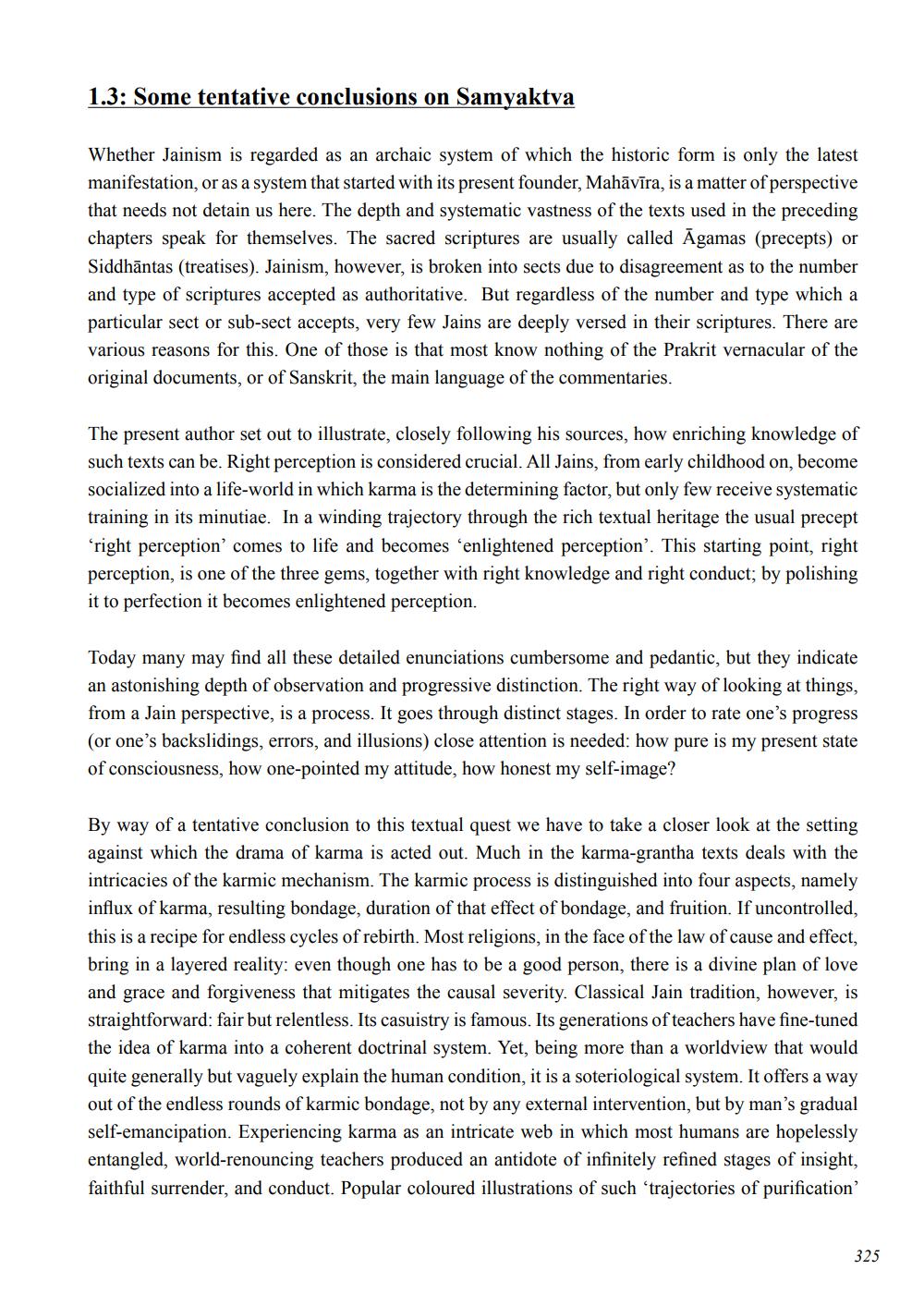________________
1.3: Some tentative conclusions on Samyaktva
Whether Jainism is regarded as an archaic system of which the historic form is only the latest manifestation, or as a system that started with its present founder, Mahāvīra, is a matter of perspective that needs not detain us here. The depth and systematic vastness of the texts used in the preceding chapters speak for themselves. The sacred scriptures are usually called Agamas (precepts) or Siddhāntas (treatises). Jainism, however, is broken into sects due to disagreement as to the number and type of scriptures accepted as authoritative. But regardless of the number and type which a particular sect or sub-sect accepts, very few Jains are deeply versed in their scriptures. There are various reasons for this. One of those is that most know nothing of the Prakrit vernacular of the original documents, or of Sanskrit, the main language of the commentaries.
The present author set out to illustrate, closely following his sources, how enriching knowledge of such texts can be. Right perception is considered crucial. All Jains, from early childhood on, become socialized into a life-world in which karma is the determining factor, but only few receive systematic training in its minutiae. In a winding trajectory through the rich textual heritage the usual precept ‘right perception' comes to life and becomes 'enlightened perception. This starting point, right perception, is one of the three gems, together with right knowledge and right conduct; by polishing it to perfection it becomes enlightened perception.
Today many may find all these detailed enunciations cumbersome and pedantic, but they indicate an astonishing depth of observation and progressive distinction. The right way of looking at things, from a Jain perspective, is a process. It goes through distinct stages. In order to rate one's progress (or one's backslidings, errors, and illusions) close attention is needed: how pure is my present state of consciousness, how one-pointed my attitude, how honest my self-image?
By way of a tentative conclusion to this textual quest we have to take a closer look at the setting against which the drama of karma is acted out. Much in the karma-grantha texts deals with the intricacies of the karmic mechanism. The karmic process is distinguished into four aspects, namely influx of karma, resulting bondage, duration of that effect of bondage, and fruition. If uncontrolled, this is a recipe for endless cycles of rebirth. Most religions, in the face of the law of cause and effect, bring in a layered reality: even though one has to be a good person, there is a divine plan of love and grace and forgiveness that mitigates the causal severity. Classical Jain tradition, however, is straightforward: fair but relentless. Its casuistry is famous. Its generations of teachers have fine-tuned the idea of karma into a coherent doctrinal system. Yet, being more than a worldview that would quite generally but vaguely explain the human condition, it is a soteriological system. It offers a way out of the endless rounds of karmic bondage, not by any external intervention, but by man's gradual self-emancipation. Experiencing karma as an intricate web in which most humans are hopelessly entangled, world-renouncing teachers produced an antidote of infinitely refined stages of insight, faithful surrender, and conduct. Popular coloured illustrations of such 'trajectories of purification'
325




